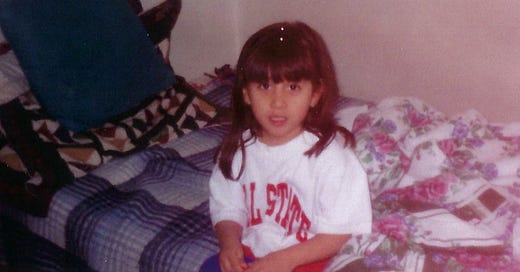Why I Wrote Mexican Hoosier Now
This is what happens when history tries to erase you—and you write back.
If you follow me, you’ve probably heard of Mexican Hoosier—my memoir that’s not on bookshelves yet. But there’s a deeper reason why I’m telling this story now; multiple reasons, actually. Yes, it’s a story of growing up between Indiana cornfields and Jalisco’s volcanic soil. But it’s also a story of borders—land, body, memory—and of belonging when neither country claims you.
So what’s Mexican Hoosier really about, you ask? Gracias for asking.
The short answer: a lyrical memoir of growing up, exploring identity, migration, and belonging in a world that never fully claims you.
The long answer?
Mexican Hoosier is a memoir rooted in the blood and soil of two worlds—Indiana cornfields and Jalisco’s volcanic earth—told by a girl born too early to an undocumented Mexican woman, cut from her womb and brought into this world as a tiny, eyelidless thing. It is a story of surviving what should have killed me—of blood as both wound and lineage, as warning and inheritance.
This book is about what it means to grow up split down the middle—by language, by borders, by silence. To be shaped by Catholic guilt and ancestral whispers of spirituality, by la chancla and American exceptionalism, by the weight of generations of women who could cook a meal out of nothing and still be called ungrateful. It is about girlhood as haunting. About the way we learn to shapeshift to survive—between abuela’s house and the cornfields, between Spanglish and silence, between the altar and the protest.
It is about the piñata at every birthday party—how we’re blindfolded and spun and asked to swing at something we’re told is joy. How the grown-ups laugh and pull it just out of reach. It is about the rust of trailers, the hum of cicadas, the smell of tamales steaming in a Hoosier kitchen in midwinter. It is about ICE raids and the soft brown hands that covered our eyes when the cops drove by. About learning to read signs in everything—ropes tightening, blood rivers, papeles not in order. About when “go back to where you came from” doesn't make sense because this is where your soul was created.
It is about the violence of assimilation and the soft rebellion of memory. About the rituals we keep even when we don’t remember why. The candles, the saints, the tortillas de maíz flipped with fingers that know what’s too hot. About healing in the in-between. About reclaiming story when history tries to erase you.
Mexican Hoosier is not just a coming-of-age memoir. It is a prayer, a resistance, a map. A blood-soaked, dirt-specked love letter to the brown kids growing up in white towns with names no one can pronounce and stories no one wants to hear—until now.
I don’t think many realize that when people try to erase Indigenous ethnicities, our histories become resistance. Rebellion and power are two sides of the same coin; one cannot exist without the other. They shape and define each other constantly—and for this reason, my identity—no, my very being—cannot exist without resistance through writing.
It took me a long time to realize that the greatest lie colonization ever told was convincing those of Indigenous ancestry that we are the immigrants. We were here long before borders and treaties—and we will be here long after. Though our ancestral homes, languages, and cultures were stripped from us, our connection to this land is sacred. The land knows us, and it will never forget us.
This memoir is both a calling to remember who you are—and an invitation to you, no matter who you are, to find something familiar within the pages of my story.
Warmly,
Isabel Vazquez
✨ Currently querying.
Comps: Crying in the Bathroom, The Distance Between Us
📩 Agents/editors into Xicana, decolonial, or diaspora stories—DMs open.
🌐 www.isabelvazquez.co
📍 Threads: writing_aztlan
📸 Instagram: writing_aztlan
If this moved you, please share it. Reposting is resistance




